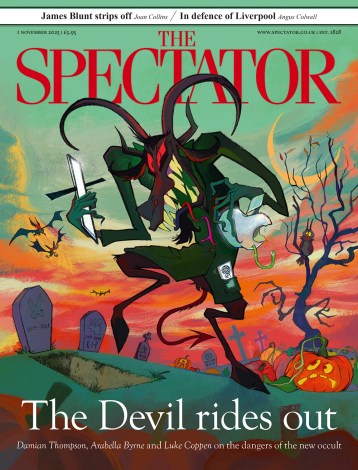To the Manor Reborn (BBC1, Thursday) is undoubtedly one of the most brilliant programmes in the history of television. But then I’m biased for the Rat is in it, and what a splendid, handsome and talented young fellow he has turned out to be. If you looked very carefully about halfway through episode one, you’ll have caught him standing facing interior designer Russell Sage, holding a sheet of wallpaper or something. And then later, you’ll have caught him again being told by Sage to remember something he’d forgotten. Superb! The boy is a natural, he’ll go far, and as his proud stepfather I shall accept nothing less than the highest offers for his services. If, say, you’re a trillionaire Turkmenistani homosexual and you want a hunky catamite for your harem, don’t even think of calling me with an offer of less than two million (not incl. transfer fee).
No, it’s OK. I don’t really want to sell the Rat into gay slavery. And I am hugely proud of him. He has now fallen on his feet working for a firm of high-end architects, using skills he picked up as an apprentice working for Sage. Sage is the interior-design genius who did the suite Kate Middleton stayed in at the Goring Hotel the night before her wedding; and also, the new interiors at the Savoy Grill, the Zetter Townhouse, Stapleford Park, and so on. He’s kind of the Anti Philippe Starck: sumptuous, eccentric, cluttered, slightly frayed, trad English craftsmanship, lush fabrics, antlers, stuffed cats.
And now Sage has been given — as they say on TV — his toughest challenge yet. He has been charged with completely revamping a National Trust property so as to make it fit for the modern age: no more oppressive rope barriers, no more things you’re not allowed to touch, no more anally retentive edicts forbidding any paint scheme that isn’t a proven part of the house’s history.
You can see why purists might object to this approach. Tudor ceiling roses, for example: were they ever painted or were they always left white in order to reflect as much light as possible? Clearly this matters, for if it’s the second then Sage’s plan to pick them out in colour might suddenly look rather tacky. If, on the other hand, there’s precedent…
This tension is, of course, what lends to the project that vital quality of ‘jeopardy’. What all reality TV producers fear is that if the viewer doesn’t imagine that the whole edifice could collapse at any moment he’ll get bored and stop watching. So, for example, it is an iron law of any archeological dig involving Tony Robinson that he has just half an hour to complete it before they build a multistorey car park on top of it and history is erased for ever. In the case of To the Manor Reborn, we are given to understand that those fussy, high-minded battleaxes at the National Trust could nix the project at any moment if Sage comes over too modern and trendy; plus, of course, it all has to be finished in no time whatsoever — otherwise a great plague will descend from heaven and kill the first-born of every family in Britain!!! (Probably.)
Not even this element, though, was quite enough to persuade those jittery, career-safe BBC programme chiefs that yet another documentary about doing up an old house — in this case, Avebury Manor, Wilts — was a goer. You can tell because they’ve insisted on having the whole thing framed by Penelope Keith (because she’s famous and was in To the Manor Born) and some bloke from a popular antiques series called Flog It!, semi-pretending that the whole project is kind of at their instigation. Yeah, right.
Look, I know TV is an artifice. But the presence of these celebrities, delightful though they are, made the programme feel at once top-heavy, dumbed-down and constructed-by-committee. Same applies to that ‘emotional historian’ they’ve brought in because she’s attractive and female and is therefore supposedly necessary to balance the presence of Dan Cruickshank. It’s all just too much.
Especially too much in times of austerity. Let it never be forgotten that we, the licence-payers, ultimately fund these slebs’ appearance fees. And what I’m guessing is that most of us would have been just as happy, if not happier, with a leaner, more honest programme where we got to see more of the show’s real star Russell Sage in action.
The most exciting scene was the one where Sage was at an auction, bidding for an antique bed. What made it good was that it felt utterly authentic. Sure, the programme needed there to be lots of rival bids and for there to be that ‘will he or won’t he get it?’ tension. But at its heart was a massive talent at the top of his game, bidding like a hoary pro, pushing his budget to the brink, knowing exactly what he wants, smiling when he gets it — and behaving exactly as he would have done if the cameras hadn’t been there. Next step, I suppose, is for Sage to be taken up by TV and become a parody of himself — just like all the other celebrities.






Comments